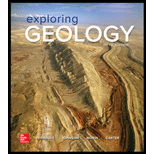
The description of various textures displayed by igneous rocks.
Answer to Problem 1BYL
The principal types of igneous textures comprise of phaneritic texture, aphanitic texture, pegmatitic texture, glassy texture, porphyritic texture, vesicular texture, and welded texture.
Explanation of Solution
Texture can be simply defined as the “grain-to-grain relationship” of minerals in a crystal. In the case of igneous rocks, the cooling rate of molten rocks, silica percentage, and the dissolved gases of magma affect the texture of a rock. There are different types of textures observed in igneous rocks namely phaneritic, aphanitic, pegmatitic, glassy, porphyritic, vesicular, and welded.
The igneous rocks that crystallize deep below the Earth’s crust take enough time to form complete crystals and hence, they develop coarse crystals. The so-formed crystals would be of similar size and could be viewed without a microscope. The rocks with such a texture are addressed as phaneritic.
The fine-grained crystals formed on sudden cooling would allow the recognition of its individual minerals only with the help of a microscope. The rocks so formed have an aphanitic texture.
During the late phase of magma crystallization, the melt may be oddly rich in water and materials such as carbon dioxide, chloride, and fluoride, making the environment enhanced in fluids, improving the transport of ions. This causes the unusual formation of the large crystals. A rock with such large crystals is called pegmatite and the texture it possesses is termed as pegmatitic.
The magmas that have got high amount of silica are likely to develop a long chain-like
Due to the difference in the crystallizing temperatures of various minerals, there are chances for one of the minerals to form larger crystals prior to the crystallization of the other minerals. If the cooling of the magma starts at depth, large crystals will be developed due to slower cooling and as the magma ascends to a shallow depth or if it gets erupted onto the surface, the rate of cooling becomes fast and smaller crystals would crystallize out. This means the resultant rock possesses a two-stage history of cooling. The rock formed in this case will have the crystals of two different sizes and this texture in which the large crystals get embedded in the fine-grained matrix is known as a porphyritic texture. The large crystals are called phenocrysts and the fine matrix is called the groundmass.
The gases in magma which were under high pressure inside the Earth escape out when magma is expelled on to the surface with the release of pressure. This creates cavities or openings in the rock from where the gases got released. Such spaces or cavities are called vesicles and the texture formed is termed as vesicular texture as seen in vesicular basalts.
When the volcanic pumice and ash are still hot, they can be compacted because of the overlying materials. Then a hard rock would be formed, which has a welded texture that is discernible by flattened, lens-shaped objects.
Want to see more full solutions like this?
Chapter 5 Solutions
Exploring Geology
 Applications and Investigations in Earth Science ...Earth ScienceISBN:9780134746241Author:Edward J. Tarbuck, Frederick K. Lutgens, Dennis G. TasaPublisher:PEARSON
Applications and Investigations in Earth Science ...Earth ScienceISBN:9780134746241Author:Edward J. Tarbuck, Frederick K. Lutgens, Dennis G. TasaPublisher:PEARSON Exercises for Weather & Climate (9th Edition)Earth ScienceISBN:9780134041360Author:Greg CarbonePublisher:PEARSON
Exercises for Weather & Climate (9th Edition)Earth ScienceISBN:9780134041360Author:Greg CarbonePublisher:PEARSON Environmental ScienceEarth ScienceISBN:9781260153125Author:William P Cunningham Prof., Mary Ann Cunningham ProfessorPublisher:McGraw-Hill Education
Environmental ScienceEarth ScienceISBN:9781260153125Author:William P Cunningham Prof., Mary Ann Cunningham ProfessorPublisher:McGraw-Hill Education Earth Science (15th Edition)Earth ScienceISBN:9780134543536Author:Edward J. Tarbuck, Frederick K. Lutgens, Dennis G. TasaPublisher:PEARSON
Earth Science (15th Edition)Earth ScienceISBN:9780134543536Author:Edward J. Tarbuck, Frederick K. Lutgens, Dennis G. TasaPublisher:PEARSON Environmental Science (MindTap Course List)Earth ScienceISBN:9781337569613Author:G. Tyler Miller, Scott SpoolmanPublisher:Cengage Learning
Environmental Science (MindTap Course List)Earth ScienceISBN:9781337569613Author:G. Tyler Miller, Scott SpoolmanPublisher:Cengage Learning Physical GeologyEarth ScienceISBN:9781259916823Author:Plummer, Charles C., CARLSON, Diane H., Hammersley, LisaPublisher:Mcgraw-hill Education,
Physical GeologyEarth ScienceISBN:9781259916823Author:Plummer, Charles C., CARLSON, Diane H., Hammersley, LisaPublisher:Mcgraw-hill Education,





